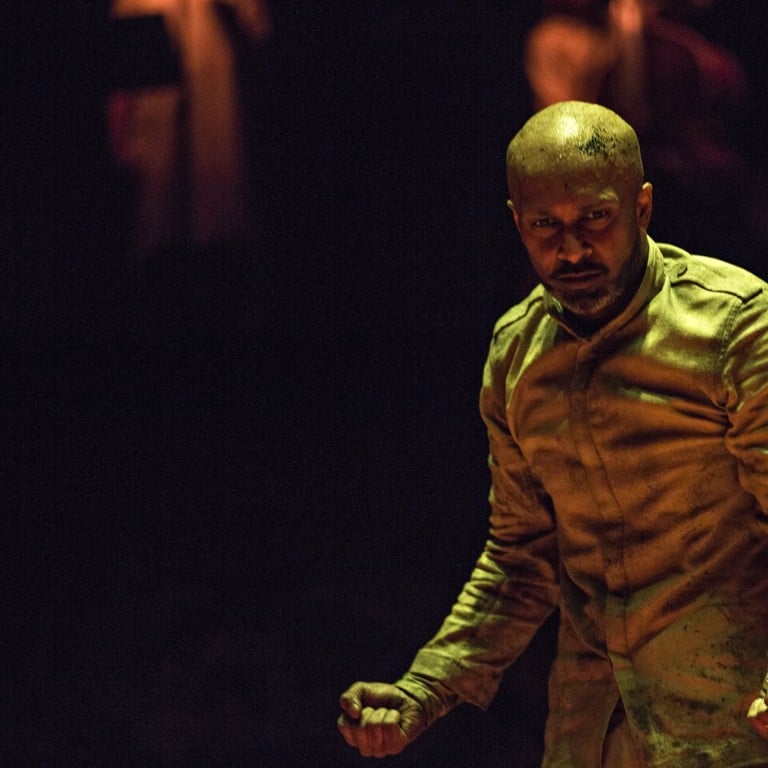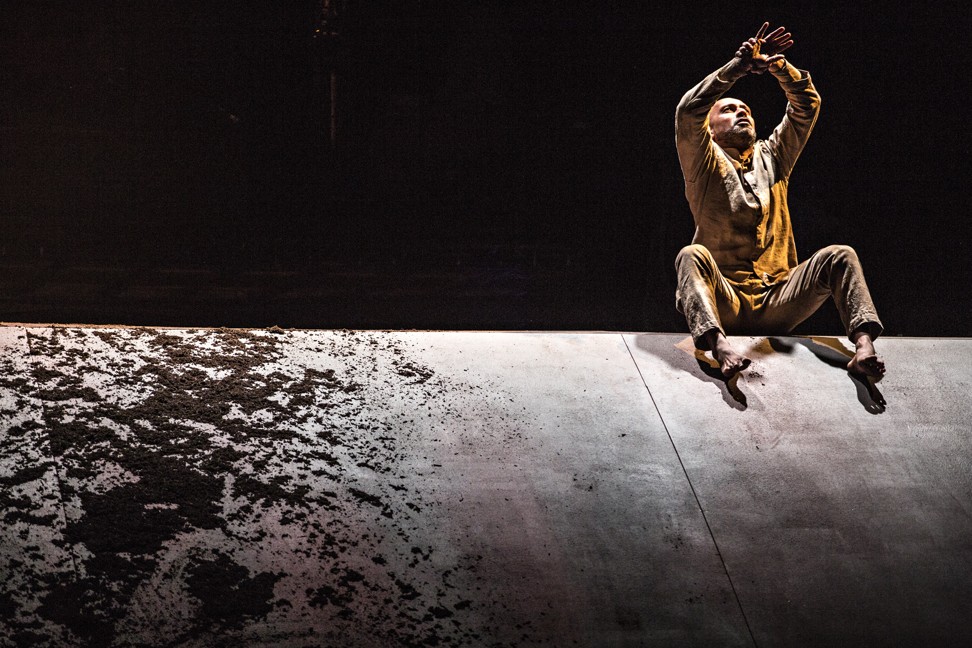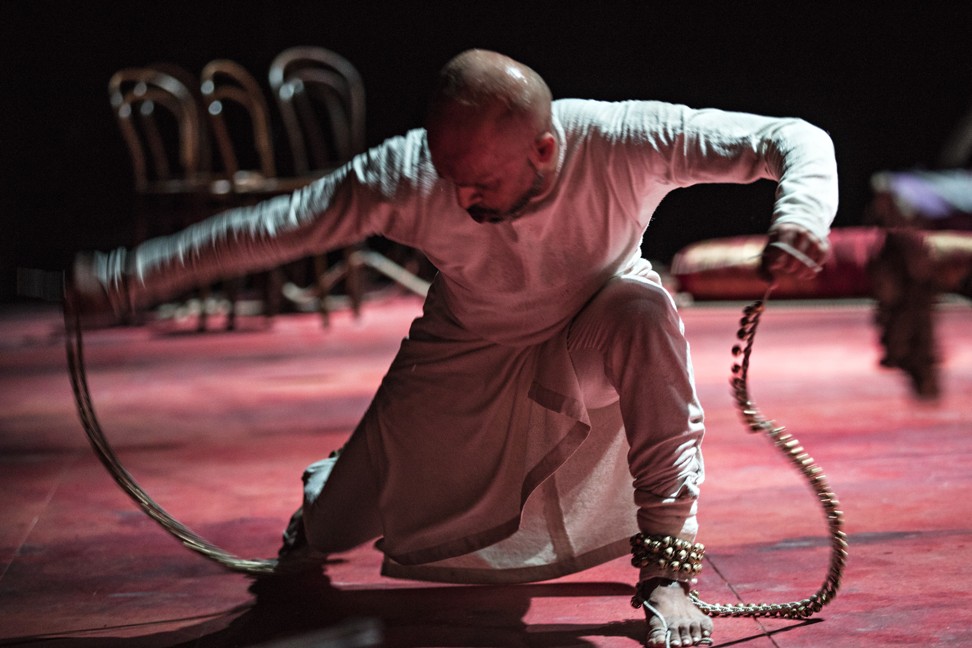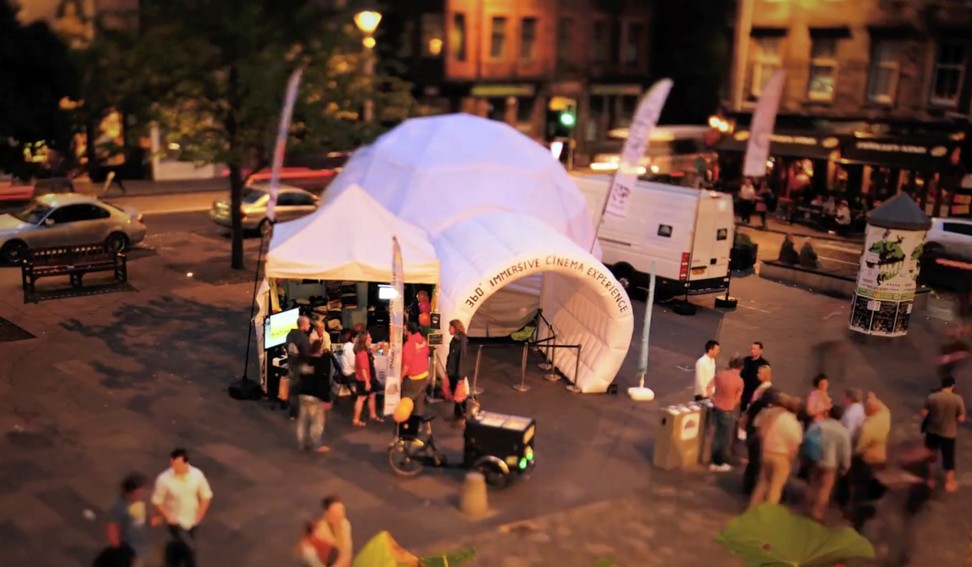
Celebrated choreographer Akram Khan uses last solo to speak out for the voiceless
- ‘XENOS’ was inspired by stories of colonial soldiers from India and Africa who have been largely written out of history
- Local dancers also put up shows to express their cultural identities and views of the world
War, colonialism, identity and what it means to be human – Akram Khan, one of the world’s most respected contemporary dancers and choreographers, has never shied away from big themes. For his last full-length solo dance performance, XENOS, which is coming to Hong Kong on 15 and 16 November, he once again explores the human condition, this time through the story of an Indian soldier drafted to fight an empire’s war.

“I don’t do small themes. I’ve always been interested in accessing and exploring the human condition,” said Khan on the phone from Moscow, before he left for Greece to watch a performance of Until the Lions, another piece he directed and choreographed with his Akram Khan Company. “That’s the basis of all my narratives.”
I don’t do small themes. I’ve always been interested in accessing and exploring the human condition
XENOS came about when 14-18 NOW, the UK’s arts programme for the First World War centenary, approached Khan to create a show. At the time, the acclaimed choreographer was developing an idea based on Prometheus, the Greek deity who was bound to a rock and had his liver eaten every day by an eagle, only for it to grow again overnight. Prometheus and the “idea of the eternal soldier, repeating history and repeating violence” were absorbed into a more contemporary narrative.
“I was upset after discovering articles about colonial soldiers from India and Africa fighting in the First World War that have been written out of history. Their stories are almost never told, hardly ever mentioned in books,” Khan, who is of Bangladeshi descent, said.

“It’s the white man that writes history, and they edited out stories of anyone of colour under the British Empire. I felt very angry. I want to give voice to those who are in the shadow, marginalised or omitted from history.”
“Xenos” means “stranger” in Greek, but it can also mean “foreigner”, “alien” or “guest”.
“I was wondering what the foreign soldier was experiencing, in a foreign land, on foreign soil, eating foreign food.”
I was upset after discovering articles about colonial soldiers from India and Africa fighting in the First World War that have been written out of history. Their stories are almost never told
At one point during the performance, Khan’s character, a court Kathak (Indian classical dance) dancer who is forced to become a soldier, inspects his hands as if they are foreign objects, and holds his arm aloft as if it does not belong to him. With these gestures, he raises the question of who it is that is really controlling his body and points to the absurdity of fighting someone else’s war.

“It’s not that far from where we are now: the absurdity still exists in our daily lives. It should be that governments serve us, but governments of the world only serve themselves. The absurdity of that is ridiculous,” Khan said.
“The rise of the right wing, Boris Johnson in the UK – the symptoms before the World Wars are repeating themselves. No one likes to talk about it but the stars are aligning to do battle.”
It should be that governments serve us but governments of the world only serve themselves. The absurdity of that is ridiculous
Khan is joined on stage by five classical musicians – percussionist B C Manjunath and vocalist Aditya Prakash provide an Indian classical score, and bass player Nina Harries, violinist Clarice Rarity, and saxophonist Tamar Osborn conclude the show with a reimagining of Mozart’s Requiem in D minor K. 626.

Khan uses props, such as ropes, as well as sounds and imagery, but otherwise it is him alone, using his body to convey the intimate experience of one warrior, standing for the four million colonial soldiers who fought in the First World War.
Audiences often ask me, ‘What do you mean?’ But I always reply: ‘What do you get from it?’
“Contemporary dance, for me, is so much about allowing things to be, not solidifying them. Words solidify things. Indian classical dance is not prescriptive, but clear, like ballet – you know where you are at every stage, you know the story.
“But contemporary dance has a generosity. It’s an offering that allows the viewer the space to have their own interpretation,” Khan, who originally trained as a Kathak dancer, said.
For Khan, the viewer plays an active role; the audience also has to do some work.
“You have to meet me halfway,” he said. “Audiences often ask me, ‘What do you mean?’ But I always reply: ‘What do you get from it?’

“Today we prioritise intelligence above wisdom and information above knowledge. Information embodied, or experienced, is knowledge. I want to bypass the mind, go straight to instincts, hit audiences in the gut.
“I love it when someone says to me, ‘I need to process what I’ve just experienced, but I’ve experienced something’ – the fact they can’t put it into words yet means I’ve done my job,” he said.
Dance as a roller-coaster
While contemporary dance, like most other art forms, is an intensely personal experience, other choreographers express similar sentiments about its universality.
Whereas Khan highlights the emotional side, award-winning, Hong Kong-born choreographer Victor Fung, who is based between Hong Kong and London, points also to our innate appreciation of rhythm and movement.
Even people who have not learned dance before can get into it – groove, rhythm, musicality and movement are innate
“Even people who have not learned dance before can get into it – groove, rhythm, musicality and movement are innate,” he said.
Contemporary dance can appeal to both dance fans and the uninitiated.
“I find audiences split into two camps: Some people do a lot of research, read up about classical Indian dance, for example, if they are about to see an Akram Khan performance,” Fung said.
“This contextualisation might help audiences read the work [in a way that is] closer to the choreographer’s intent. But, equally, an audience can just enjoy it by experiencing it instead of trying to find a fixed meaning.
“I liken it to a roller-coaster ride in an amusement park: You don’t go on the ride to find meaning, it’s an experience. If you go into a theatre with this idea, you can sit back and enjoy.”
Choreography classics take the stage
Hong Kong audiences can sit back and enjoy cutting-edge local choreography over the next two months.
On 11, 12 and 13 October, Yin Yu Chun Fai by Mui Cheuk-yin, Yuri Ng, Daniel Yeung and Dick Wong brings together four distinguished Hong Kong choreographers for four larger-than-life performances. These exceptional artists have witnessed the development of the Hong Kong Cultural Centre over the past 30 years and the role it has played in the careers of different generations of dancers.
[In] contemporary dance, we generally strive to create an experience for the audience, rather than it being a case of one movement means one thing
The four dancer-choreographers have strikingly different backgrounds. Mui, one of Hong Kong’s first generation of professional dancers, trained in Chinese classical and ethnic dance in the 1970s, while Ng learned ballet with Jean Wong, and attended the National Ballet School in Canada and Royal Ballet School in England.

Yeung is a self-taught dancer, while Wong studied journalism, but both have gone on to have prestigious careers in dance.
Fung expects these different backgrounds to come together to make a fascinating show.
“Each choreographer probably has a very different view on how meaning is created, but in contemporary dance, we generally strive to create an experience for the audience, rather than it being a case of one movement means one thing,” he said.
“There may be set movements that a choreographer would have worked with dancers to create, but during a live performance, a dancer puts in their movement signature, creating different dynamics, tones, accents and nuances, as they interact with the music on the spot – this is what makes performances and performers unique.”
Emerging choreographers win the limelight
On September 13, 14 and 15, three performances will be presented at the Kwai Tsing Theatre to showcase new dance works by emerging local choreographers Joseph Lee, Terry Tsang and Tsang Wing-fai as part of the ‘New Force in Motion’ Series.

Lee, who studied accountancy at the Chinese University of Hong Kong (CUHK) before completing his Master of Arts in contemporary dance at The Place, London, will perform Drifting, a piece that explores the delights and dangers of virtual reality.
In Mo Ngaan Tai, Terry Tsang investigates power and desire. The young performer majored in modern dance at the Hong Kong Academy for Performing Arts before joining City Contemporary Dance Company in 2013.

Tsang Wing-fai, who choreographs a team of four dancers in Infiltrated, has since childhood dreamed of becoming a dance artist. After studying architecture at CUHK, she has followed her calling to become a freelance dancer and choreographer.
It’s free to dance
Two free admission programmes offer more chances for Hongkongers to indulge in dance.
Fall4Dance will take over Piazza A outside the Hong Kong Cultural Centre on 12 October, showcasing dance pieces from several local arts groups including Unlock Dancing Plaza, Passoverdance, Y-Space, DancingAngels, Studiodanz, the School of Dance of the Hong Kong Academy for Performing Arts, and the Fringe Mime and Movement Laboratory.

On 11, 12 and 13 October, five independent choreographers will perform in the 4/F Foyer. Under the guidance of esteemed artistic adviser Andy Wong, the performances are centred on the concept of time and celebrate the Cultural Centre’s vital role in developing local performing arts.

A dome will also be set up at Piazza B of the Cultural Centre inside which three short films on dance will be screened. Dance Dome is an innovative 360-degree cinema created by 4π Productions and Coreo Cymru, blurring the boundaries between movement, digital technology and video to immerse the viewer in dance.

